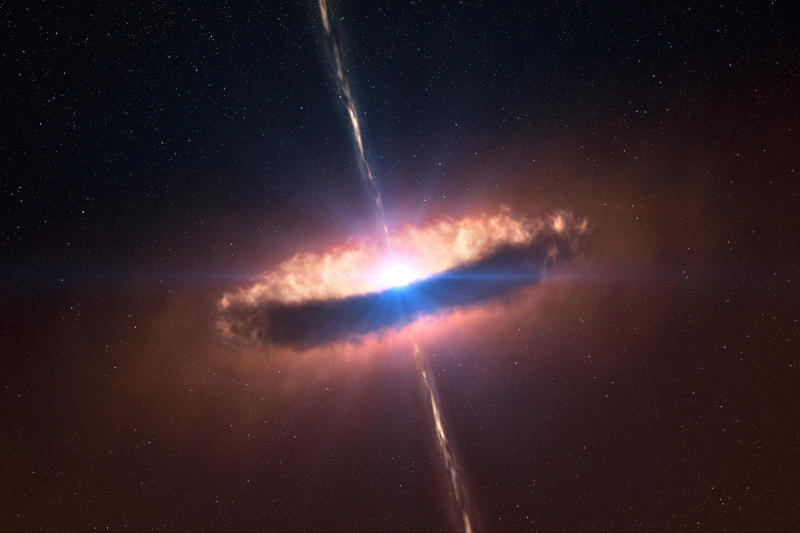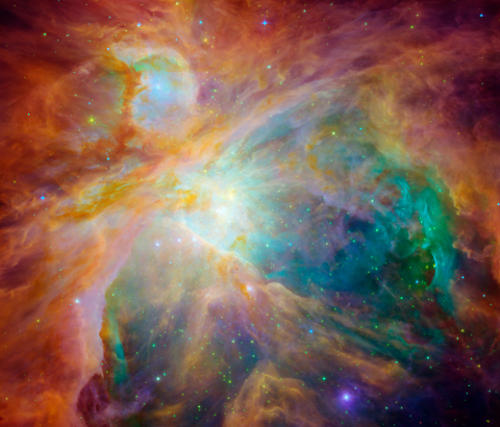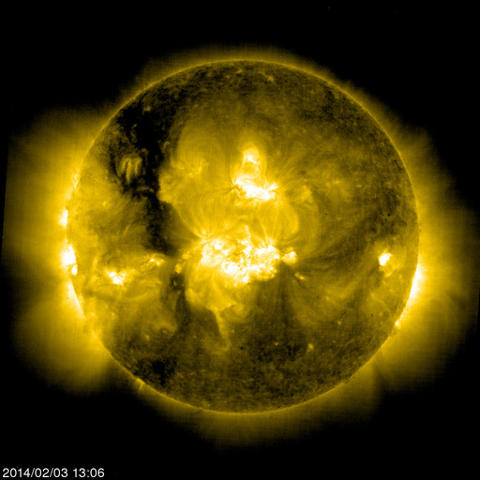
A dusty disk closely encircles a massive baby star in outer space. The flared disk extends to about 130 times the distance between the Earth and our sun with a mass that is approximately twenty times that of the sun.

NASA’s Hubble Space telescope and the Spitzer telescope combine for this beautiful image comprising of both the infrared and visible light spectrum (image is a false colour composite). The Orion Nebula is about 1,500 light years from Earth and is the bright part of the Orion/Hunter constellation. This picture shows many young/baby stars and four very large stars at the center of this cosmic cloud.

A stunning ultraviolet picture of sunspots taken by NASA’s Extreme ultraviolet Imaging Telescope (EIT) from the Solar and Heliospheric Observatory (SOHO) spacecraft which is currently in the vicinity of the Earth-Sun lagrangian point one (L1).

The planet Neptune with a bright blue hue from an image taken by Voyager 2 using its orange and green filters, at a distance of 4.4 million miles from Neptune. The blue/green colour of Neptune is also interesting to note because the ancient Roman religions had Neptune as their god of water and the sea.

An early (August 26, 1979) image of Saturn and one of its moons, Titan (top left of the picture), taken by NASA’s venerable Pioneer 11 space probe.